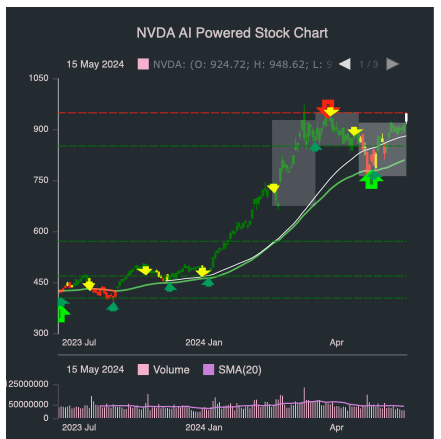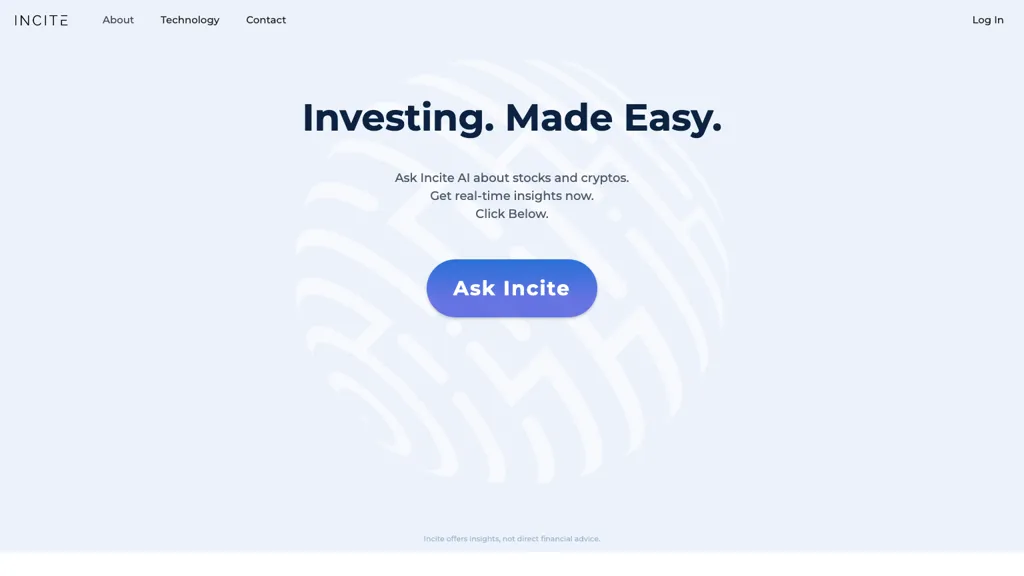20 Handy Tips For Deciding On AI Stock Picker Platform Websites
20 Handy Tips For Deciding On AI Stock Picker Platform Websites
Blog Article
Top 10 Tips To Evaluate The Integration Of Ai Analyzing/Predicting Stocks Trading Platforms
Integrity and compatibility are key elements to be considered when evaluating AI analysis and forecasting platforms for trading. Platforms that integrate seamlessly with existing tools, workflows and systems will increase productivity and efficiency. Here are 10 tips to help you evaluate the compatibility and integration of these platforms.
1. Check Brokerage Integration
Brokers that are supported - Ensure that the platform is connected to your brokerage account or trading account.
Trade Execution: Verify whether the platform allows direct trade execution by the integrated broker.
Account Synchronization: Ensure whether your platform is able to sync live-time balances on your account as well as positions and transaction histories.
2. Assessment of API availability
API access: Ensure that the platform you choose to use has an API (Application Programming Interface) that allows developers to develop customized tools and automate workflows.
API documentation: Ensure that the API is properly documented, with examples and use-cases.
Rate limits: Check the appropriate rates on the API and if it is able to handle your anticipated usage volume.
3. Integration of Third-Party Tools
Popular Tools: Make sure that the platform is compatible with other applications, like Google Sheets and Excel.
Data import/export: Make sure the platform enables easy export/import data from and to other tools.
Plugins/extensions Verify the platform's support of extensions and plugins that provide additional functions.
4. Test Compatibility for Operating Systems
Desktop compatibility: Ensure that the device is compatible with your preferred operating system (Windows, macOS or Linux).
Mobile compatibility. Check if you can download the app for iOS or Android.
Web-based access: Check whether the platform is access via a browser on the web to allow for greater flexibility.
5. Analyze Data Integration Capabilities
Data sources - Check that the platform can be integrated with different sources of information (e.g. news feeds, market data, sentiment on social media).
Real-time feeds of data Verify that the platform allows for real-time integration of data in order to give the most current analysis.
Import historical data: Check whether the platform permits import of historical data to backtest or analysis.
6. Cloud and On Premise Compatibility
Cloud-based platforms: Ensure that the platform can be accessed from any place with an internet connection.
On-premises deployment: Make sure you know your platform supports on-premises deployment.
Take a look at the hybrid model. It combines on-premise and cloud capabilities.
7. Verify Cross Platform Synchronization
Device synchronization. Check that the platform is synchronized with settings and data between the devices (desktops/laptops/mobiles/tablets).
Check for real-time updates to determine if any changes made by one device will be reflected instantly to the other.
Find out whether it permits access to data or functions when you are offline.
8. Evaluation of compatibility with trading strategies
Automated trading strategies or algorithmic must be backed by the trading platform.
Custom indicators - Check to see whether the platform allows the use or custom scripts and technical indicators.
Backtesting strategy: Verify if your platform allows you to backtest trading strategies with historical data.
9. Examine Security and Compliance
Data encryption - Make sure that your platform is using encryption for all your data, in transit as well as when it's in storage.
Authentication: Verify whether the platform supports secure authentication methods (e.g., two-factor authentication).
Check for regulatory compliance: Make sure that the platform complies to applicable regulations (e.g. GDPR, FINRA or SEC).
10. Test Scalability and Performance
Scalability: The platform needs to be able accommodate growing user numbers and data volumes.
Performance during load conditions: Determine if the platform remains flexible during market conditions with high volatility.
Utilization of resources - Make sure that the platform effectively uses system resources like CPU, memory, or bandwidth.
Bonus Tips
Feedback from customers: Read user reviews and testimonials in order to assess the integration capabilities of the platform.
Trial period: Try the platform free of charge or download a demo to see how it integrates with your existing tools and workflows.
Customer Support: The platform must provide a solid support service when it comes to integration issues.
With these suggestions to evaluate the integration and compatibility of AI stock predicting/analyzing trading platforms in order to ensure they are compatible with your existing systems, and improve your trading efficiency. Have a look at the top rated the advantage for trading with ai for website info including chart ai trading assistant, ai for stock predictions, ai stock trading app, options ai, ai stocks, ai stock market, incite, ai chart analysis, ai stocks, ai for investment and more.
Top 10 Tips To Evaluate The Updating And Maintenance Of Ai Stock Predicting Trading Platforms
In order to keep AI-driven platforms for stock predictions and trading secure and efficient it is crucial that they be regularly updated. Here are 10 top suggestions for evaluating their updating and maintenance procedures.
1. Frequency of Updates
Verify the frequency of updates on your platform (e.g. every week, monthly, or even quarterly).
Why? Regular updates demonstrate the active development of the company and its ability to react to market changes.
2. Transparency in Release Notes
Read the release notes on your platform to determine what improvements and modifications have been made.
Transparent release notes show the platform's commitment to ongoing improvement.
3. AI Model Retraining Schedule
Tips: Find out how often the AI models are retrained using new data.
Since markets are constantly changing, it is important to keep up-to-date models to remain current and relevant.
4. Fixes for bugs and issue resolution
Tips - Check how quickly the platform can resolve technical and bug issues.
Why: The platform will be stable and reliable if any bug solutions are implemented quickly.
5. Updates to Security
TIP: Find out if the platform updates its security protocols frequently to ensure the security of data of users and trading activities.
Cybersecurity is crucial in financial platforms for preventing theft and fraud.
6. New Features Integration
Check the platform to see whether it has recently added new features based on market or user feedback (e.g. an enhanced analytics).
What's the reason? Features updates show creativity, responsiveness to user needs and new ideas.
7. Backward Compatibility
Make sure that any the updates won't affect existing functionality, or require substantial reconfiguration.
Why: Backward compatibility makes it easy to smooth transition.
8. Communication between Maintenance and User Personnel
Tip: Evaluate how the platform communicates scheduled maintenance or downtime to users.
The reason: Clear communication minimizes the chance of disruption and boosts confidence.
9. Performance Monitoring and Optimisation
Tips: Make sure that the platform continuously monitors performance metrics such as accuracy or latency, and also optimizes their platforms.
Why: Continuous optimization is essential to ensure that the platform is efficient.
10. Conformity to Regulatory Changes
Verify that the platform's policies and features have been updated to conform to the latest financial regulations or privacy laws for data.
What's the reason? The compliance with regulations is essential to ensure the trust of users and to minimize legal risks.
Bonus Tip: Integration of feedback from users
Make sure that updates and maintenance are based on user feedback. This demonstrates a user centric approach as well as a dedication to improvement.
You can evaluate these aspects to make sure you are selecting a platform for AI prediction of stocks and trading that is up-to the minute, well-maintained and able to adapt to the changing dynamics of the market. View the top investing with ai advice for blog examples including stock trading ai, stocks ai, can ai predict stock market, ai trading tool, ai stock trader, best ai for stock trading, ai stock prediction, free ai stock picker, ai stock analysis, chart analysis ai and more.